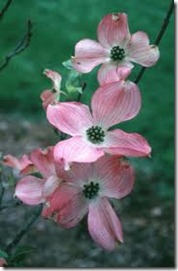Although the flowering dogwood has a relatively brief lifespan, this tree is a popular choice for gardeners and landscapers. It has even been honored as the official state tree of Virginia and North Carolina. According to the United States Department of Agriculture Forest Service, a dogwood can survive in an ideal location for 125 years. Knowledge of the flowering dogwood’s particular needs will allow enjoyment of this rapid-growing ornamental favorite for decades.
Features
-
During its relatively short lifespan, a flowering dogwood grows up to 25 to 35 feet tall, and 20 to 25 feet wide. Its root system is quite shallow. The tree’s signature white, pink or red “petals” are actually modified leaves, or bracts. These bracts surround the tree’s small yellow flowers. In the fall, the bracts turn red and the dogwood produces clusters of red berries, or drupes.
Geography
-
The flowering dogwood is native to the eastern United States, from southern Maine and southern Ontario, south to Texas and Florida. It requires well-drained, moist soil, with a slightly acidic pH level of 5.2 to 6.0. Although flowering dogwood will tolerate heat, it prefers partial shade, and often grows at the edge of pine tree stands.
Time Frame
-
A flowering dogwood’s lifespan begins with a 20- to 30-year period of rapid growth. Seeds germinate in the spring and grow rapidly throughout the summer. During adverse conditions, growth will temporarily stop. A young tree is ready to transplant during its third year, when it has reached a height of 2 to 3 feet. Beginning in the sixth year, flowers bloom in late March in warmer regions and in late May in colder climates.
Considerations
-
Environmental conditions, such as over-fertilization or heavy clay soil, can shorten a flowering dogwood’s lifespan. Although the tree will tolerate heat, its shallow root system is extremely sensitive to drought and flooding. According to the University of Florida Extension Service, irrigation during periods of drought can ensure a full lifespan. Diseases and pests that can weaken or kill a dogwood include spot anthracnose, discula blight, and dogwood borer.
Benefits
-
According to the Forest Service, flowering dogwood’s rapid growth and showy bracts make it a popular ornamental tree. According to the North Carolina State University Extension Service, the tree also serves as an ideal understory or accent tree. During its brief lifespan, its rapidly decomposing leaf litter adds calcium and other minerals to soil. Wild animals and birds can eat the red berries, which are poisonous to humans.


Deprecated: strpos(): Passing null to parameter #1 ($haystack) of type string is deprecated in /home/agriviek8Qv/agriviet.net/public_html/wp-includes/comment-template.php on line 2522